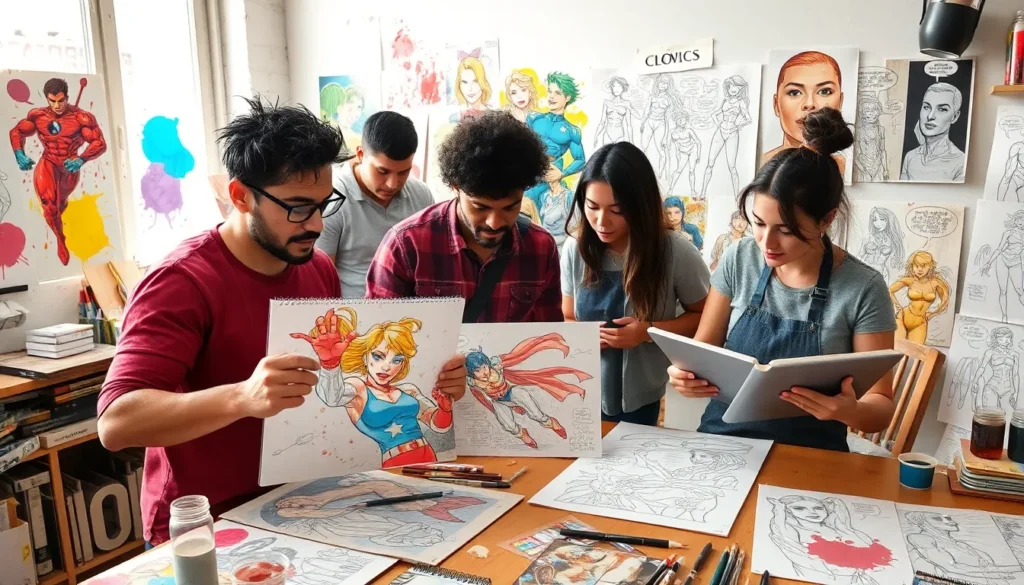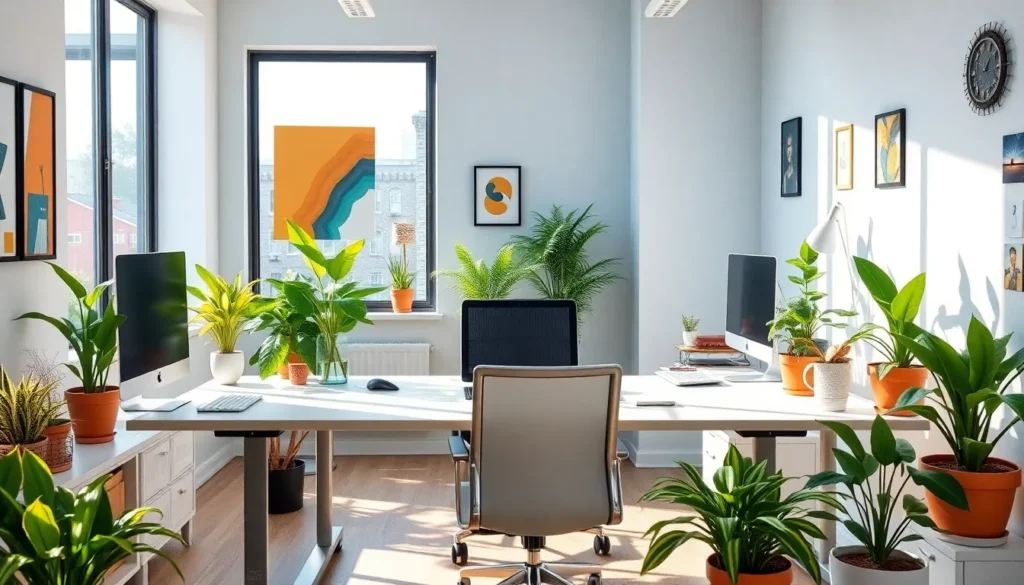Table of Contents
ToggleOld money interior design isn’t just a style; it’s a lifestyle, steeped in elegance and sophistication. Imagine walking into a space where every piece of furniture tells a story, and the walls whisper tales of generations past. It’s the kind of decor that makes you feel like you should be sipping tea while discussing the latest scandal in high society.
This design aesthetic embraces timelessness over trends, favoring quality over quantity. Think rich fabrics, classic patterns, and a certain je ne sais quoi that says, “I’ve arrived, but I don’t need to shout about it.” If you’re ready to transform your home into a haven of understated luxury, dive into the world of old money interior design. After all, who wouldn’t want their living room to resemble a cozy yet opulent museum?
Understanding Old Money Interior Design
Old money interior design encapsulates a refined approach to decorating spaces, emphasizing heritage and lasting value. The aesthetic conveys a sense of history while integrating comfort into opulent living.
Defining Old Money Aesthetics
Old money aesthetics center around understated luxury. This design style embraces tradition, often sourcing inspirations from classic European estates or historic American homes. Elements like intricate woodwork, vintage art, and heirloom furniture play significant roles in creating a cohesive, elegant atmosphere. Subtle color palettes, often featuring shades of deep green or muted blue, enhance the calming effect of these interiors. Resulting in spaces that feel inviting yet sophisticated, the focus remains on quality over quantity.
Key Characteristics of Old Money Design
Key characteristics define old money design and set it apart. Rich fabrics like velvet or silk frequently adorn furniture and window treatments. Classic patterns, including damask or paisley, often repeat throughout textiles, adding depth and interest. Art pieces, particularly family portraits or landscapes, contribute to the narrative of wealth that spans generations. Lighting fixtures, such as chandeliers or antique sconces, showcase craftsmanship and add a touch of grandeur. Finally, the strategic use of space creates a harmonious flow, ensuring each room serves its purpose without excess.
Historical Influence on Old Money Design
Old money design reflects a rich tapestry of historical influence, featuring styles that have evolved over decades. Understanding its evolution offers insight into its timeless appeal.
Evolution of Styles Through the Decades
Classic European influences shaped early 20th-century American interior design, emphasizing grandeur and balance. The Arts and Crafts movement introduced natural materials and craftsmanship, leading to a focus on quality and durability. In the 1920s, American designers embraced Art Deco with geometric patterns and luxurious fabrics, bringing a sense of modernity. The Mid-Century Modern movement shifted preferences toward minimalism and functional designs, yet old money aesthetics retained an appreciation for opulence. The 1980s and 1990s saw a revival of traditional elements, incorporating vintage pieces, ornate furnishings, and rich textures that continue to define old money spaces. Throughout these periods, a consistent dedication to heritage and quality endured, allowing each era to contribute uniquely to the old money design narrative.
Notable Designers and Influencers
Many influential figures shaped old money interior design, crafting spaces that exemplify sophistication. Elsie de Wolfe, considered America’s first interior designer, blended elegance with practicality, emphasizing light and airy aesthetics. Additionally, Billy Baldwin’s work showcased comfort while maintaining an opulent touch, setting trends that resonate today. Across the ocean, English designer David Hicks fused traditional themes with bold colors, inspiring countless interpretations of classic styles. Renowned for the use of antiques and luxurious textiles, designer Laura Ashley popularized home decor that mirrors the old money ethos. Each designer’s unique vision reinforced the timelessness of old money interior design, ultimately celebrating the charm of enduring elegance.
Key Elements of Old Money Interior Design
Old money interior design combines elegance with sophistication, showcasing timeless elements that elevate any space. This aesthetic thrives on quality, heritage, and understated luxury.
Color Palettes and Materials
Muted color palettes define old money interiors, favoring shades like taupe, deep greens, dusty blues, and rich browns. These tones create serene atmospheres and allow for decorative elements to shine. Materials play a vital role; natural fibers and high-quality fabrics such as silk, velvet, and wool dominate. Wood, especially mahogany and walnut, appears in furniture and moldings, adding warmth to each room. Spaces reflect age and character through the use of antique finishes and patinas, enhancing the charm of the design.
Furniture and Decor Choices
Heirloom furniture forms the backbone of old money interiors, emphasizing craftsmanship and history. Pieces often feature intricate detailing, showcasing artisanship. Vintage artwork adorns walls, displaying personal narratives through portraits or landscapes. Grand lighting fixtures, such as crystal chandeliers, elevate the overall ambiance. Accessories reflect a curated approach, with items collected over time rather than trends. Each decor choice exudes a sense of calm sophistication, avoiding excess while celebrating classic influences.
Modern Interpretations of Old Money Design
Modern interpretations of old money design maintain an air of sophistication while integrating contemporary elements. Designers blend traditional features with modern aesthetics to create refined yet functional spaces.
Blending Tradition with Contemporary Style
Maintaining a sense of elegance often occurs through the thoughtful combination of classic and modern design elements. Furniture pieces might include traditional silhouettes paired with sleek finishes. Contemporary artwork complements vintage decor, creating a balanced visual dialogue. Additionally, neutral color palettes might unite these contrasting styles, establishing harmony throughout the space. Modern technology subtly supports the ambiance without detracting from heritage details. This approach highlights a commitment to both history and innovation, allowing timeless elegance to coexist with functionality.
Case Studies of Modern Old Money Interiors
Several notable examples showcase the successful fusion of old money design with modern influences. A recent renovation of a classic New England home reflects this trend with its careful selection of heirloom furniture alongside contemporary light fixtures. High ceilings adorned with traditional moldings contrast with minimalist furniture lines, creating a striking visual impact. An upscale Manhattan apartment incorporates rich textiles and antique art pieces, harmonizing them with contemporary finishes and open layouts. These case studies illustrate adaptability within the old money aesthetic, demonstrating that refinement can evolve while remaining rooted in tradition.
Old money interior design embodies a timeless elegance that resonates with those who appreciate history and craftsmanship. By focusing on quality materials and classic aesthetics, it creates spaces that are both luxurious and inviting. This design style encourages a thoughtful approach to decor, where each piece tells a story and contributes to a cohesive narrative of sophistication.
As modern interpretations of old money aesthetics emerge, they allow for a fresh take while preserving the essence of tradition. Homeowners can draw inspiration from this refined style to cultivate environments that reflect both heritage and contemporary living. Ultimately, embracing old money design is about celebrating the art of living well, where every detail matters and comfort meets elegance.







